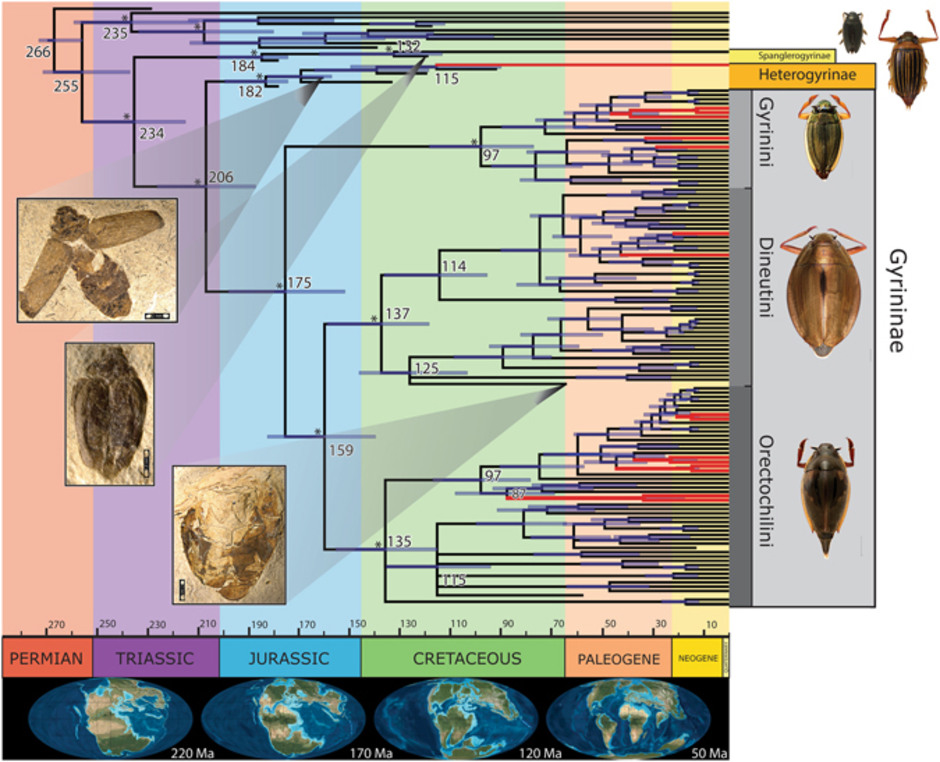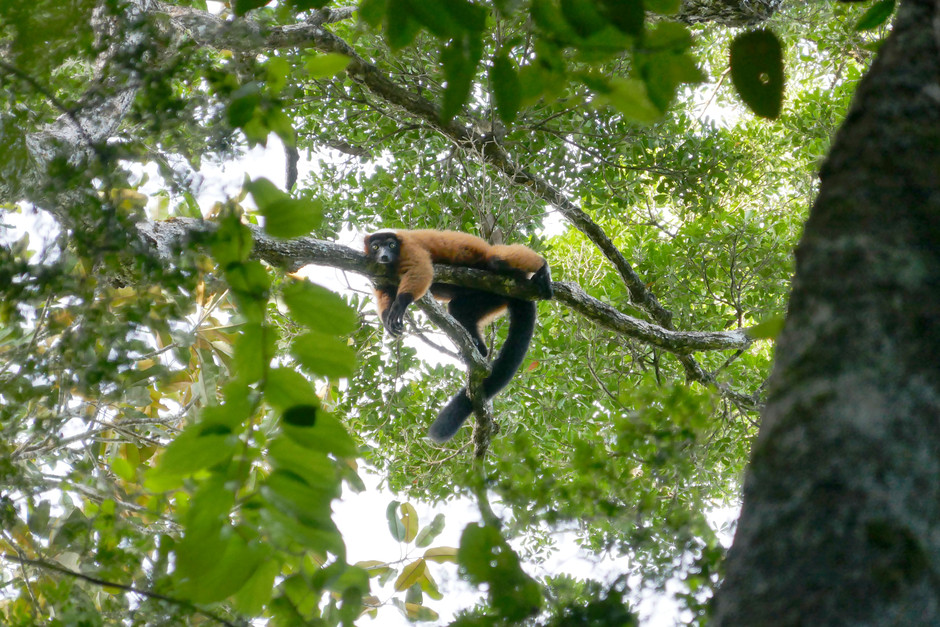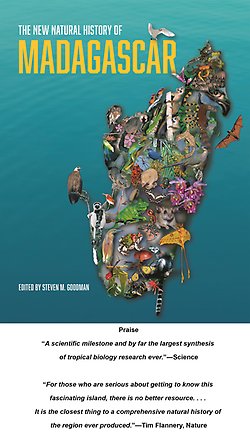Forskningsområden: Zoologi
Forskningsämnen: Madagaskar, Biodiversitet, Taxonomi & artbeskrivning, Insekter, Sekvensering och genomforskning, Evolution
Forskningsområden: Zoologi
Forskningsämnen: Madagaskar, Biodiversitet, Taxonomi & artbeskrivning, Insekter, Sekvensering och genomforskning, Evolution
Project description
Project period: 2006–ongoing
Participating departments from the museum: Zoology
The largest group of aquatic beetles are the diving beetles, with over 4500 described species worldwide. Diving beetles are important predators in freshwater environments and can serve as indicator species for valuable watercourses and wetlands.
In Madagascar, unaffected freshwater environments are highly threatened as the original forests disappear. At the same time, knowledge about the species, their distribution, evolution, and habitat requirements is very limited.
The purpose of this project is partly to map the fauna of aquatic beetles in Madagascar, but also to investigate their origins and evolution. Which species are endemic, and how do they live? In which groups has speciation accelerated in Madagascar, and why? How can increased and comprehensive knowledge about a group of freshwater insects aid in conservation priorities?
Our inventory of aquatic beetles in Madagascar has been ongoing since 2006. Through about ten expeditions, each lasting 3 to 6 weeks, to different parts of the large island, over 800 sites have been inventoried so far. Initially, more accessible areas near major roads were inventoried, but more recently, we are spending more time reaching even more inaccessible forests that have never been surveyed before.
![Hydaticus and Cybister species colonized Madagascar multiple times but never radiated. Endemic species in squares. From Bukontaite et al (2015). [https://journals.plos.org/plosone/article?id=10.1371/journal.pone.0120777]](/images/200.3cab4fb218ee70e5e7c88a5/1713362292181/madagaskar2.jpg) Zoom image
Zoom imageCaption: Hydaticus and Cybister species colonized Madagascar multiple times but never radiated. Endemic species in squares. From Bukontaite et al (2015). [https://journals.plos.org/plosone/article?id=10.1371/journal.pone.0120777]
Mapping biodiversity
The project consists of a fundamental part focused on mapping and describing diversity. This is published in taxonomic works where newly discovered species are named and described, old names are investigated, and distributions and habitat requirements are accounted for through the field findings and habitat notes we collect.
This information and knowledge form the basic foundation for both practical conservation and further research on, for example, species ecology, life cycle, and threat status. When the project began, 161 species of diving beetles were known from Madagascar. Through our surveys, we now know over 300 species!
Evolution, relationships, speciation
We are also interested in how evolution and speciation have occurred in Madagascar and what the relationships look like between species. For these questions, we sequence DNA which is then used to reconstruct evolution in the form of family trees. With the help of family trees and distribution, we can, for example, test how many times Madagascar has been colonized, whether it has led to continued speciation, whether speciation has been driven by specific geographical patterns or climate adaptations. For diving beetles, it turns out that only a handful of genera have led to significant speciation on the island after colonization. We still don't have all the answers as to why.
Publications
Alarie Y, Michat MC, Bergsten J, Hajek J. (2023) Morphology of the larvae of Rhantaticus congestus (Klug, 1833) and phylogenetic comparison with other known Aciliini (Coleoptera: Dytiscidae: Dytiscinae). Zootaxa 5380 (3): 247-264. https://doi.org/10.11646/zootaxa.5380.3.3 External link.
External link.
Sites RW, Bergsten J (2022) The Naucoridae (Heteroptera: Nepomorpha) of Madagascar, with revisions of Temnocoris and Tsingala (Laccocorinae). PLoS ONE 17(9):1-79 e0272965. https://doi.org/10.1371/journal.pone.0272965 External link.
External link.

Tip-dated phylogeny of whirligig beetles revealing Malagasy Heterogyrus milloti to be the oldest lineage ever dated from Madagascar. From Gustafson et al (2017b). [https://www.nature.com/articles/s41598-017-08403-1]
Ranarilalatiana T, Razafindraleva TA, Granath G, Bukontaite Malm R, Rakotonirina JC, Razafindranaivo V, Raveloson Ravaomanarivo LH, Johansson F, Bergsten J. (2022) Remaining forests on the Central Highlands of Madagascar - endemic and endangered aquatic beetle fauna uncovered. Ecology and Evolution 12(12), e9580 https://doi.org/10.1002/ece3.9580 External link.
External link.
Press release in Swedish: Femton nya arter hittade i hotade skogar på Madagaskar External link.
External link.
The following six book chapters are published in The New Natural History of Madagascar (ed. SM Goodman, Princeton UP, 2022) External link.
External link.
Bergsten J., Manuel M, Ranarilalatiana T, Ramahandrison AT, Hájek J. (2022) Coleoptera: Dytiscidae, diving beetles, tsikovoka. (pp. 1024-1034) -In Goodman, S. M. (ed.). The new natural history of Madagascar. Princeton, Princeton University Press.
Gustafson, GT, Ranarilalatiana T, Bergsten J. (2022) Coleoptera: Gyrinidae, whirligig beetles, fandiorano. (pp. 1034-1041) -In Goodman, S. M. (ed.). The new natural history of Madagascar. Princeton, Princeton University Press.
Bergsten J. (2022) Coleoptera: Haliplidae, crawling water beetles. (pp. 1041-1043) -In Goodman, S. M. (ed.). The new natural history of Madagascar. Princeton, Princeton University Press.
Bergsten J., Manuel M. (2022) Coleoptera: Noteridae, burrowing water beetles. (pp. 1044-1047) -In Goodman, S. M. (ed.). The new natural history of Madagascar. Princeton, Princeton University Press.
Bergsten J. (2022) Coleoptera: Torridincolidae, torrent beetles. (pp. 1047-1049) In-Goodman, S. M. (ed.). The new natural history of Madagascar. Princeton, Princeton University Press.
Bergsten J. (2022) Coleoptera: Hydroscaphidae, skiff beetles. (pp. 1050-1051) -In Goodman, S. M. (ed.). The new natural history of Madagascar. Princeton, Princeton University Press.
Bergsten J, Biström O. (2022) Diversification in the Comoros: review of the Laccophilus alluaudi species group with the description of four new species (Coleoptera: Dytiscidae), Diversity. 2022, 14(2), 81. https://doi.org/10.3390/d14020081 External link.
External link.
Alarie, Y, Michat, M. C., Ranarilalatiana, T, Bergsten, J. (2022) Larval morphology of the Madagascan endemic diving beetle genus Hovahydrus Biström, 1982 (Coleoptera: Dytiscidae) and phylogenetic comparison with other known Hyphydrini. Zootaxa 5219 (3): 227–246. https://doi.org/10.11646/zootaxa.5219.3.2 External link.
External link.
Bergsten, J., Ranarilalatiana, T., & Biström, O. (2020) A new species of Bidessus from Anjozorobe-Angavo and a review of Malagasy Bidessus (Coleoptera, Dytiscidae). European Journal of Taxonomy, 720(1), 1–18. DOI: https://doi.org/10.5852/ejt.2020.720.1109 External link.
External link.
Ranarilalatiana T, Raveloson Ravaomanarivo LH, Bergsten J (2019) Taxonomic revision of the genus Copelatus of Madagascar (Coleoptera, Dytiscidae, Copelatinae): the non- erichsonii group species. ZooKeys 869: 19-90. https://doi.org/10.3897/zookeys.869.33997 External link.
External link.
Perkins PD & Bergsten J. (2019) New Myxophagan water beetles from Madagascar (Coleoptera: Torridincolidae, Hydroscaphidae). Zootaxa 4657 (1): 57-96 https:// External link.doi.org/10.11646/zootaxa.4657.1.2
External link.doi.org/10.11646/zootaxa.4657.1.2 External link.
External link.
Ranarilalatiana T, Bergsten J (2019) Discovery of a specialist Copelatinae fauna on Madagascar: highly ephemeral tropical forest floor depressions as an overlooked habitat for diving beetles (Coleoptera, Dytiscidae). ZooKeys 871: 89-118. https://doi.org/10.3897/zookeys.871.36337 External link.
External link.
Désamoré A, Laenen B, Miller KB, Bergsten J. (2018) Early burst in body size evolution is uncoupled from species diversification in diving beetles (Dytiscidae). Molecular Ecology 27: 979-993. https://doi.org/10.1111/mec.14492 External link.
External link.
Gustafson, G.T., Bergsten, J., Ranarilalatiana, T., Randriamihaja, J.H., Miller, K.B. (2017a). The morphology and behavior of the endemic Malagasy whirligig beetle Heterogyrus milloti Legros, 1953 (Coleoptera: Gyrinidae: Heterogyrinae). The Coleopterists Bulletin 71: 315–328. https://doi.org/10.1649/0010-065X-71.2.315 External link.
External link.
Gustafson, G.T., Prokin, A.A., Bukontaite, R., Bergsten, J., Miller, K.B. (2017b). Tip-dated phylogeny of whirligig beetles reveals ancient lineage surviving on Madagascar. Scientific Reports 7: 8619 doi:10.1038/s41598-017-08403-1 External link.
External link.
Press release in Swedish: Madagaskars äldsta djur har fyra ögon External link.
External link.
Hjalmarsson, A.E., Bergsten, J., Monaghan, M.T. (2015). Dispersal is linked to habitat use in 59 species of water beetles (Coleoptera: Adephaga) on Madagascar. Ecography 38: 732-739. DOI: 10.1111/ecog.01138 External link.
External link.
Biström, O., Nilsson, A. N., Bergsten, J. (2015). Taxonomic revision of Afrotropical Laccophilus Leach, 1815 (Coleoptera, Dytiscidae). Zookeys 542: 1–379. doi: 10.3897/zookeys.542.5975 External link.
External link.
Bukontaite, R., Ranarilalatiana, T., Randriamihaja, J.,H., Bergsten, J. (2015). In or Out-of-Madagascar?—Colonization Patterns for Large-Bodied Diving Beetles (Coleoptera: Dytiscidae). PLoS ONE 10(3): e0120777. doi:10.1371/journal.pone.0120777 External link.
External link.
Bukontaite R, Miller KB, Bergsten J (2014). The utility of CAD in recovering Gondwanan vicariance events and the evolutionary history of Aciliini (Coleoptera: Dytiscidae). BMC Evolutionary Biology 2014, 14:5 pp1-18 doi:10.1186/1471-2148-14-5 External link.
External link.
Hjalmarsson, A.E., Bukontaite, R., Ranarilalatiana, T., Randriamihaja, J.H., Bergsten, J. (2013). Taxonomic revision of Madagascan Rhantus (Coleoptera, Dytiscidae, Colymbetinae) with an emphasis on Manjakatompo as a conservation priority. ZooKeys 350: 21–45, doi:10.3897/zookeys.350.6127 External link.
External link.
Vondel, B van, Bergsten, J. (2012). Review of the Haliplidae of Madagascar, with descriptions of two new species (Coleoptera) Tijdschrift voor Entomologie 155: 57-66. doi: 10.1163/221194312X651382
Isambert, B., Bergsten, J., Monaghan, M.T., Andriamizehy, H., Ranarilalatiana, T., Ratsimbazafy, M., Andriniainimanana, J.R., Vogler, A.P. (2011). Endemism and evolutionary history in conflict over Madagascar’s freshwater conservation priorities. Biological Conservation 144: 1902–1909. http://dx.doi.org/10.1016/j.biocon.2011.04.016 External link.
External link.
Doctoral theses & Master theses
de Jong A (2021) Diversity and Phylogeny of Africophilus of Madagascar using RAD-seq genomic data (Coleoptera: Dytiscidae). Master Thesis, 44pp. Department of Zoology. Stockholm University, Stockholm, Sweden.
Englund WF (2020) Phylogeny and species delimitation of an endemic radiation of diving beetles [Hovahydrus] on Madagascar using genomic data. Master Thesis, 54pp. Department of Zoology. Stockholm University, Stockholm, Sweden.
Ranarilalatiana T. (2020) Diversité de Copelatus Erichson, 1832 (Coleoptera, Dytiscidae) de Madagascar et des Coléoptères Adephaga aquatiques dans les vestiges forestiers du Haut Plateau Central particulièrement sur les aires protégées de Manjakatompo Ankaratra, d’Ambohitantely et d’Anjozorobe-Angavo. PhD Thesis, Faculty of Sciences, University of Antananarivo, Antananarivo, Madagascar, 265 pp. Publication in PDF External link.
External link.
Llamas RA (2020) Diversity and species delimitation of the Laccophilus alluaudi species group in Madagascar (Coleoptera: Dytiscidae). Master Thesis, 41pp. Department of Zoology. Stockholm University, Stockholm, Sweden.
Anderberg, R. 2016. The genus Rhantaticus Sharp 1880 revised with integrative taxonomy (Coleoptera, Dytiscidae). Master Thesis, 51pp. Department of Zoology. Stockholm University, Stockholm, Sweden.
Bukontaite, R. (2015) Evolution of the Biodiversity Hotspot of Madagascar from the Eye of Diving Beetles: Phylogeny, colonization and speciation. PhD Thesis 39pp + papers I-IV. Department of Zoology. Stockholm University, Stockholm, Sweden. ISBN: 978-91-7649-223-9 External link.
External link.
Hjalmarsson, AE. 2012. Dispersal is linked to habitat preference: comparative population genetics of 59 species of tropical aquatic beetles (Coleoptera: Adephaga). Master Thesis, 50pp. Department of Biology, Chemistry and Pharmacy, Institute of Biology, Freie Universität Berlin, Berlin, germany.
Holmgren, S. 2015. Phylogeny and Diversity of the Madagascan Uvarus - a glimpse into the diving beetle tribe Bidessini (Coleoptera: Dytiscidae). Master Thesis, 49pp. Department of Zoology. Stockholm University, Stockholm, Sweden.
Funding
Project members
Project manager



